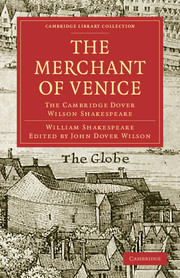INTRODUCTION
Published online by Cambridge University Press: 07 September 2010
Summary
For the text of this play we have pretty plain sailing; being left with three not very dissimilar versions amid which to steer, and now enabled by labour and ingenuity of previous students to arrange them strictly in order of merit. They are two Quartos and the 1623 First Folio. The whole question of the provenance of the text, as we have it, will be found very fully discussed in a subsequent Note on the Copy: but the conclusion comes very simply to this. There were two Quartos, both dated 1600, from either of which the 1623 Folio might have derived its authority: but one of these, and the one long taken as the better and called the ‘First Quarto,’ is now ascertained to have been fraudulently ante-dated on the title-page by Jaggard, who issued it as one of a series in 1619. So we come back for primary reliance on what is generally known as the ‘Second’ or ‘Heyes’ Quarto, the title of which is reproduced in facsimile on p. I.
With the ‘sources’ of The Merchant of Venice we have (historically) even less reason to worry ourselves. The play includes three plots derived from old story and interwoven or adjusted by Shakespeare as best he could contrive. But these three plots—or two and a half of them—are to be found in Il Pecorone (or ‘The Gaby’), a book of tales by one Ser Giovanni, supposed to have been compiled in 1378 but not published until 1558.
- Type
- Chapter
- Information
- The Merchant of VeniceThe Cambridge Dover Wilson Shakespeare, pp. vii - xxxiiPublisher: Cambridge University PressPrint publication year: 2009First published in: 1926



